The Travelin’ Man returns to Temecula: Part one
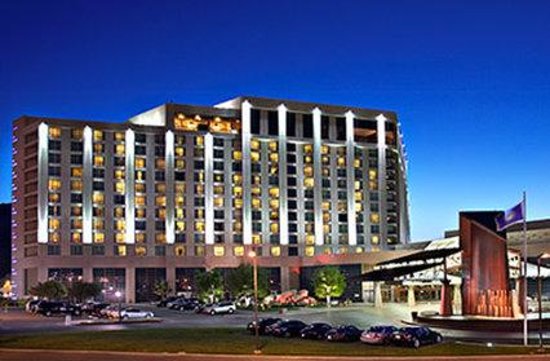
Thursday, September 27: It’s interesting how life tends to proceed in patterns. The last time I traveled during back-to-back weeks, which happened last July, I experienced a small town/big city contrast, as I worked shows in Sloan, Iowa (population 983, as of 2016) and Los Angeles (4 million, as of 2016). Now just five days after returning from Shawnee, Oklahoma (population 31,543, as of 2014), I was prepared to depart for Temecula, California (106,780 as of 2013). While the difference between Shawnee and Temecula isn’t dramatic, I was booked to land 62 miles south in San Diego, whose population of 1.41 million, as of 2016, is the eighth largest in the U.S. and whose prodigious rush-hour traffic compares to its neighbor to the south.
The reason for this trip is to chronicle (with the help of CompuBox colleague Andy Kasprzak) a “ShoBox” tripleheader topped by a scheduled 10-rounder between lightweights Devin Haney and Juan Carlos Burgos and supported by eight-round bouts featuring middleweights Cem Kilic and DeAndre Ware and lightweights Thomas Mattice and Zhora Hamazaryan. The Mattice-Hamazaryan match is particularly intriguing because, just 70 days earlier in Sloan, Mattice won a split decision so disputed that Showtime’s blow-by-blow man Barry Tompkins called it “absolutely criminal” and analyst Steve Farhood labeled it the worst he had seen in his 18 years of calling ShoBox fights.
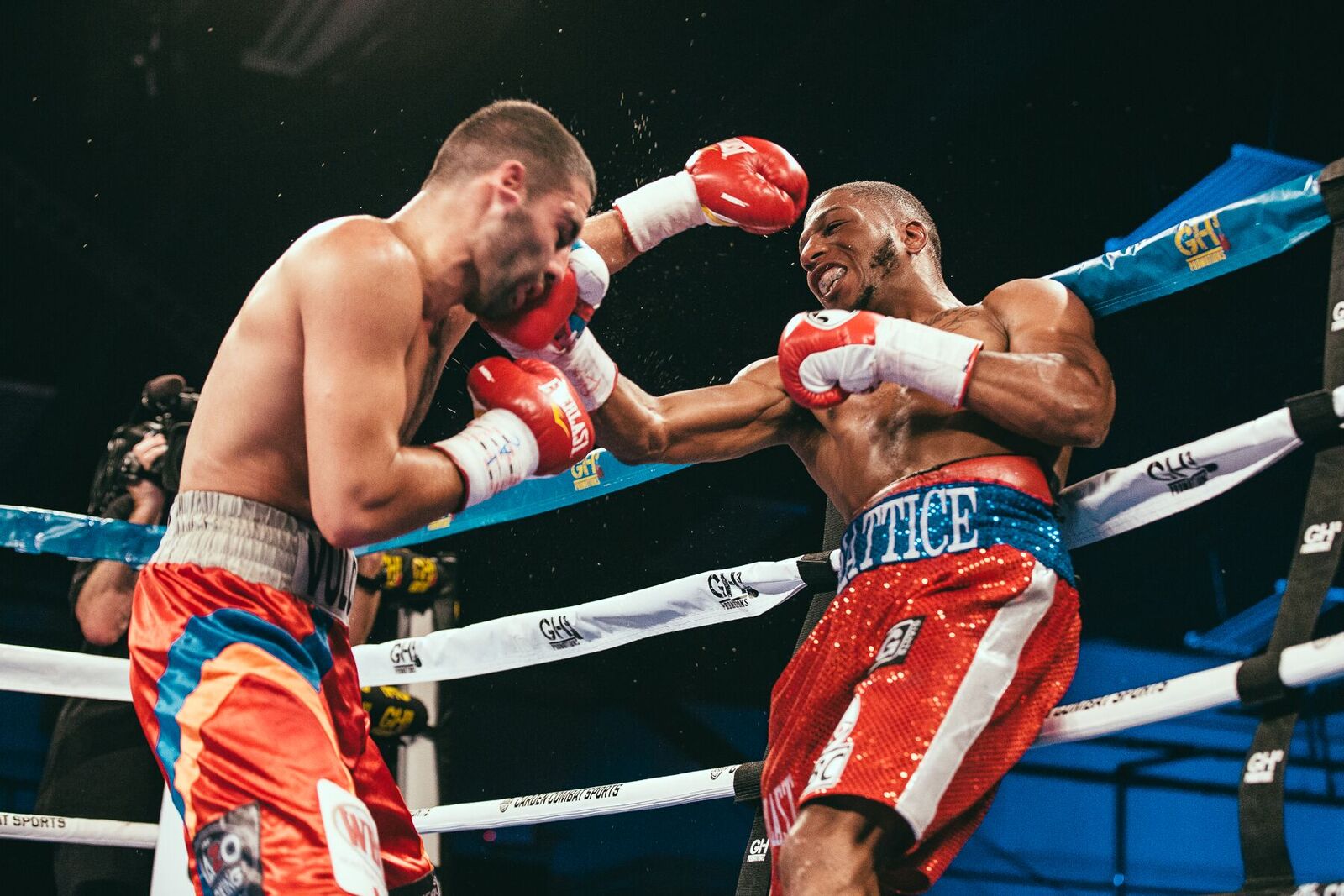
Lightweights Thomas Mattice (right) and Zhora Hamazaryan. Photo credit: Rosie Cohe/Showtime
The CompuBox numbers supported the conventional wisdom that Hamazaryan merited the win, for the round-by-round breakdown showed him having a 5-2-1 lead in overall connects, thanks to his sweeping the final three rounds, a period in which he out-landed Mattice 57-33 in total punches landed to expand his final margin to 134-97. At the end of my summation, I stated the only foreseeable way to resolve the issue was to stage a rematch and to have it fought before a more seasoned judging panel than was the case in Sloan. That resolution appears to have come true, because California is arguably the most active boxing state in the country and the slate of judges is experienced at the highest levels:
* Sergio Caiz – 487 bouts judged, including 13 for major titles since January 2008. His most recent championship assignment took place June 16 when WBA junior featherweight titlist Daniel Roman out-pointed Moises Flores on the Errol Spence Jr.-Carlos Ocampo undercard in Frisco, Texas, and, for the record, he saw Roman a 116-112 winner, somewhat narrower than the scores turned in by colleagues Wilfredo Esperon (118-110) and Levi Martinez (120-108).
* Edward Hernandez Sr. – 438 bouts judged, including 10 championship bouts in the last four years. His most recent championship assignment was the July 28 lightweight unification fight between the WBCs Mikey Garcia and the IBF’s Robert Easter Jr., which Hernandez scored 116-111 compared to 117-110 by Larry Hazzard Jr. and 118-109 by Steve Weisfeld.
* Alejandro Rochin – 1,051 bouts judged, including 52 for major titles over the past 27 years. His most recent high-level assignment occurred September 8, when he scored Juan Francisco Estrada a 118-110 winner over Felipe Orucuta, which was in range of compatriots Zac Young and Edward Hernandez Sr., both of whom saw it 117-111.
In fact, this trio will score all three televised bouts, not an uncommon occurrence but still a test of their long-term focus. Their resumes suggest they’re up to the task.
Another noteworthy story line is the dual role being played by Devin Haney: Main event fighter and show promoter. While the sport has seen many world-class teenager boxers in its history, Haney stands inside a very small circle of promoters under age 20. I thought he was alone in this distinction but, thanks to the combined effort of Farhood and RingTV.com’s Ryan Songalia, I learned Haney has a peer in Jim Claude Manangquil of Sanman Promotions, who currently guides bantamweight contender Reymart Gaballo, as well as Golden Boy Promotions prospect Romero Duno.
Songalia told me via Facebook Messenger that Manangquil’s first show occurred March 28, 2009 at the Oval Gym in General Santos City, which, since he was born in November 1993, would have made him 15½. The 11-fight show included Randy Petalcorin (in his pro debut), Paul Apolinario (KO 2 Warlito Bartiquel) and future 108-pound title challenger Jether Oliva (UD 10 Rogen Flores).
“Mananguil’s family is rich tuna exporters in General Santos City and to keep their son from boxing they gave him money to be a promoter as a high school student,” Songalia said.
Still, Haney’s achievement is exceptional. At the age of 19 years 320 days, this show will be his first since obtaining his California promoter’s license. Not only that, he already has one fighter under his umbrella in St. Louis featherweight Darren Cunningham, who will look to improve on his 6-0 (3) record against 10-11-1 journeyman Saul Hernandez during the show’s untelevised portion.
Haney’s drive to succeed despite his abbreviated years is not surprising, given his history. The seven-time national amateur champion turned professional at the age of 16 years 29 days and, at 17 years 148 days, was the youngest fighter ever to compete at the MGM Grand in Las Vegas, when he out-pointed Rafael Vazquez over four rounds on the Manny Pacquiao-Timothy Bradley III undercard, in his fifth pro outing. He was advanced enough to spar with Shane Mosley, Jessie Vargas and Rances Barthelemy, among others, and to be part of Floyd Mayweather Jr.’s training camp for the Conor McGregor bout.
Another surprising aspect of his pro career is the diversity of locales in which he has fought: 10 fights in Mexico, two in Nevada, four in Pennsylvania and one each in Louisiana, California and Georgia. His geographical worldliness only adds to his considerable composure inside the ring.
Haney’s deeds inside the ring thus far have been self-evident and the numbers further illustrate the dominance he has shown so far.
In his last three fights against Enrique Tinoco (UD 8), Hamza Sempewo (TKO 5) and Mason Menard (TKO 9), Haney has controlled the pace (51.5 punches per round to his opponents’ 37.1), dominated distance with the jab (26.5 attempts/7.9 connects per round and 29.8% accuracy to his foes’ 16.5/1.2/7.3%) and created huge gaps, in terms of total connects per round (18.6 vs. 6), landed power shots per round (10.8 vs. 4.8) and accuracy (36.1%-16.2% overall and 43%-23.3% power).
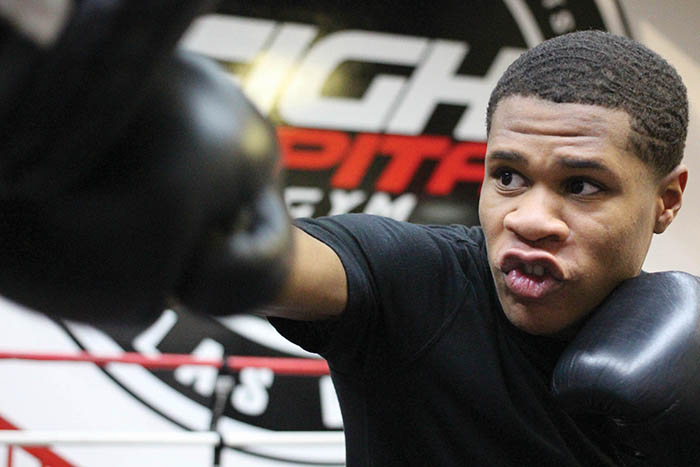
Lightweight Devin Haney
Many observers, including this one, thought Haney was attempting a noteworthy jump in caliber when he fought Menard, who had won 31 of his last 32 fights but was one fight removed from a brutal seventh round KO loss to future lightweight titlist Raymundo Beltran four months earlier. Haney answered with the best performance of his career to date and the numbers reflected his level of dominance: Connect gaps of 143-50 overall, 75-8 jabs and 68-42 power, percentage gulfs of 34%-23% overall, 31%-10% jabs and 37%-30% power and nearly doubling Menard’s average output (47.2 per round to 24.2).
Some believe Haney is moving the bar another notch up by facing Burgos but, as of this writing, I’m not in that camp. First, Burgos is emerging from a 13-month layoff. Second, he’s fighting for only the fourth time since losing a lopsided decision to then-WBO junior lightweight titlist Mikey Garcia in January 2014. Third, the combined record of Burgos’ three post-Garcia opponents is 20-36-2 and his first two comeback opponents were 1-5 and 8-26. However Burgos should have been referred to as a onetime champion because I (and many others) believed he did more than enough to dethrone Roman Martinez in January 2013. After all, he out-landed the then-WBO 130-pound titlist 286-193 overall, 52-29 jabs and 234-164 power, while also being more accurate in every phase (36%-23% overall, 17%-12% jabs and 46%-28% power). In most eyes, Tony Paolillo had it right when he scored the fight 116-112 for Burgos but he was overruled by Waleska Roldan’s scandalous 117-111 scorecard for Martinez and John Signorile’s decisive 114-114 rendering.
For these reasons – in addition to the 11-year age gap – I believe Haney-Burgos will be a showcase for the youngster’s skills but because of his height, reach and experience, he will extend the fight. A late-round TKO is possible, if the gap in age and talent are particularly graphic, but my instinct guided by experience tells me a lopsided decision for Haney is the most likely result.
*
While Haney is making history as a promoter, the place within which he’ll make it also has quite a story. Consider:
* The first boxing card at the Pechanga Resort & Casino in Temecula, California, was on November 5, 1999 on a card topped by featherweights David Toledo and David Vasquez (Toledo won a 12-round split decision). Notables on the undercard included light heavyweight Eric Harding (KO 7 Leon Gray), heavyweight Jorge Luis Gonzalez (W 6 Salvador Casillas) and future lightweight titlist Julio Diaz (TKO 1 Ramon Acuna).
* Diaz was the first of 29 fighters who held major titles during the course of their careers. Of those, onetime WBA junior featherweight titlist Rico Ramos made the most appearances with five and five others have made multiple appearances (James Toney and Vassiliy Jirov with three, Andre Ward, Austin Trout and Ruslan Provodnikov with two). Besides those listed previously, other titlists who have fought at Pechanga are Sergio Martinez, Yuriorkis Gamboa, Keith Thurman, Antonio Tarver, Sergio Mora, Robbie Peden, Harold Grey, David Diaz, Wayne McCullough, Robert Guerrero, Michael Moorer, Cruz Carvajal, Riddick Bowe, Steve Forbes, Vernon Forrest, Nonito Donaire, Vivian Harris, Sam Soliman, Anthony Dirrell, Paul Williams, Carlos Quintana, Andre Berto and Hasim Rahman.
* The Haney-Burgos card is the 39th staged at Pechanga and the 33rd to be nationally televised. Seven channels have aired those shows and FOX leads with 11 telecasts. The others are ESPN2 (10), Showtime (six), Telefutura (2), HBO (2), CBS Sports Network (1) and NBC (1).
* The first card aired by Showtime at Pechanga occurred on January 20, 2006. Junior bantamweight Nonito Donaire scored a 10-round split decision over Kahren Harutyunyan to win the vacant NABF junior bantamweight title while Vivian Harris out-pointed Marteze Logan over 10 rounds.
A final note: For the second consecutive week, Showtime will air a card emanating from a venue that was part of Riddick Bowe’s three-fight comeback, following his disqualification wins over Andrew Golota. Last week Showtime traveled to the Fire Lake Arena in Shawnee, Oklahoma, where “Big Daddy” began his comeback with a two-round blowout over Marcus Rhode, on September 25, 2004. Now the network is at Pechanga, where Bowe scored a 10-round split decision over Billy Zumbrun on April 7, 2005. Unfortunately the network won’t trek to the site of Bowe’s final fight – the SAP Arena in Mannheim, Germany. There Bowe won an eight-round decision over Gene Pukall on December 13, 2008.
(Note: I later received an email stating that the scheduled November 17 fight between two-belt super middleweight titleholders Claressa Shields and Christina Hammer, in Atlantic City, was postponed. Could Mannheim be a potential site? Yes. But will it be held there? Hammer, a German-based Kazakh, would love that but Team Shields would probably take a nanosecond to veto that idea. Still, it would be an excellent trifecta of geographical coincidence).
*
Today’s trek to Temecula will have an unusual component: Although one Southwest aircraft will take me from Point A (Pittsburgh) to Point B (San Diego), it will first make a stop in St. Louis in order to swap out crew and passengers. I guess one can call this an indirect direct flight.
With the plane scheduled to leave at 12:10 p.m., I arose at 6:25 a.m., left the driveway at 7:15 and arrived at the airport shortly before 9:30. Once again, the extended parking lots nearest to the terminal entrance were completely full, a situation that forced me to park in the outermost lots I call “the hinterlands.” Even then, it was difficult to find a space near a sign (important in terms of finding the car Saturday night), but, after some serious circling, I settled into a spot directly under the 19F sign.
Thanks to TSA Pre-Check, I cleared security without any issues but once I arrived at Gate A-5, I hoped to resolve the final issue: Improving my place in line.
For those who don’t fly (or who don’t fly often), it is important to note that Southwest, unlike other airlines, has no assigned seating. Instead passengers are divided into three groups of 60 and those with status are placed in Group A, while the others are shunted into Groups B and C. Because I don’t fly Southwest often, I was assigned B-48, which meant, in theory, I would be the 108th person to board the aircraft. Experience told me that this placement might result in my being forced to fly cross-country in a middle seat while also not having sufficient overhead space to stow even my small clothes bag.
Fortunately for me, Southwest offers an alternative: Business Select. Under this option, a passenger, for a fee, could guarantee himself a place between A-1 and A-15. I jumped at the chance to improve my lot and, after paying $40, I was given a new boarding pass bearing “A-14,” which happened to be the same spot I got the last time I traveled to Temecula in February 2017. Upon entering the cabin, I picked a window seat in row seven and resumed reading one of the two books I brought along with me: Nigel Collins’ excellent “Boxing Babylon.”
Save for moderate turbulence midway through the flight, the journey from Pittsburgh to St. Louis was uneventful. After reaching the gate, one of the flight attendants asked those of us who were going on to San Diego to remain in our seats, for the time being, so a head count could be conducted. Should the numbers match, we then would be permitted to get up and stretch our legs but not allowed to leave the aircraft. I was one of only 13 passengers who were set to fly both ends of the journey and that included pilots and flight attendants.
Because we were flying against the jet stream, the St. Louis to San Diego leg was scheduled to last three-and-a-half hours. It ended up being even longer because, according to the pilot, the tower had our plane approach the runway from too high an altitude and, as a result, the pilot was asked to pull up, circle San Diego, and make a second attempt that, as evidenced by you reading these words, was successful.
After deplaning, I boarded a bus that took us to the rental car garage. I stopped by the Avis counter and was assigned a gray Kia Sport, which, I was told, represented an upgrade. Once I found my vehicle, I consulted the Showtime production memo to get the address of the crew hotel (the Fairfield Inn and Suites in Temecula) and tapped it into my cell phone, whose battery, at this point, was at a comfortable 68%.
Once I pulled out of the garage, however, the trouble began.
First, the phone’s Google Maps app could not pinpoint me and because I had such trust in the program, I didn’t print out a list of step-by-step directions. I knew I wanted to be on Interstate 15 North but didn’t know how to get there. Hunt-and-peck driving, especially amid unfamiliar urban environments, can be quite stressful because of the unforgiving strictures of one-way streets and serial tailgaters who will honk at any sign of hesitance. Worse yet, my phone’s battery was eroding at a rate of one percent every minute and, unlike last week, I forgot to take my phone’s car charger with me.
By the time Google Maps found me, the phone was down to 61% but now I had a route by which to get to Interstate 15 North. That route, however, was beset by bumper-to-bumper traffic so slow that a distance normally covered in 30 seconds required six minutes. I hoped my battery would hold out long enough to get me to I-15.
It did and, at that point, I hatched a plan: Once the phone announced my next turn would be in 47 miles, I looked at the odometer and did some quick math in my head. Once I was within five miles of my next turn-off, I would turn on my phone and would have it guide me the rest of the way. At the time I turned off my phone, the battery was at 38%.
The plan worked perfectly; once I turned my phone back on, I had lost only two percentage points. With only 22 minutes left to travel, I figured I had more than enough juice to get me to the hotel…right?
Well…
First, the app’s female voice informed me that a massive traffic jam was ahead, so it guided me to a side road that enabled me to bypass about two miles of it. Once I returned to I-15, I had a couple of miles before my next turnoff but traffic limited me to between 15 and 25 mph. By the time I reached it, I had 21% left – still enough to get me there, if all went well.
It didn’t go well.
I had reached Jefferson Street – the street on which the Fairfield is located – and I was asked to turn right. After doing so, I discovered the hotel was not in the immediate vicinity, so I was asked to turn right onto another street, in order to get me back to Jefferson Street. Once I did, I ran into the same scenario and ended up making the “wrong” right turn a second time. By now, the phone’s battery had dipped below 15%, which prompted me to shift the device into energy preservation mode.
Instead of continuing this hamster-wheel scenario, I turned off the phone (in case I needed to call the hotel for directions if I got hopelessly lost) and took the considerable risk of navigating on my own. I drove straight ahead, executed a legal U-turn, turned right onto Jefferson Street and began reading the numbers on the side of buildings to determine whether I was driving toward the desired number (27416) or away from it. It turned out I was driving away from it, so I executed another legal U-turn, secure in the knowledge that my destination was not that far away.
As it turned out, the hotel was located a few hundred feet past the point where the GPS asked me to turn right and the sign denoting it was extremely small and hard to see. After parking the rental and walking into the lobby, I asked a hotel employee if any other guests had any problems locating the hotel with their GPS devices.
“All the time,” I was told. “For some reason, the GPS companies can’t pinpoint our place.”
As foolish as I felt, I did derive some comfort from knowing that my trouble wasn’t unique.
The next order of business was dinner and while the hotel didn’t offer room service, there were plenty of options within walking distance. After choosing one of those options, I returned to my room and spent the remainder of the evening catching up on everything I had missed due to my cross-country travel. Remaining on East Coast time, I turned out the light shortly after 10 p.m.
Friday, September 28: I awakened at 2:30 a.m. and rested fitfully until deciding to arise two hours later. I spent the next several hours chronicling the events of the previous day, after which I took the elevator down to the lobby to have breakfast – or, according to my body clock – lunch. Being a very light eater early in the day, I had a small plate of scrambled eggs and two pieces of sausage along with a carton of two-percent milk. That’s about all I can eat during that part of the day.
After returning to my room, I caught up on the events of the day, which included the announcement that HBO was ending its boxing programming at the end of this, its 45th year. It was stunning news because, for most of its existence, HBO was the leader of high-end boxing programming in the U.S. It had the best fighters, aired the best fights and did so with state-of-the-art production and Hall of Fame announcers such as Don Dunphy, Barry Tompkins, Jim Lampley and Larry Merchant, as well as Hall of Fame judge Harold Lederman, who revolutionized the role of “unofficial official.” Of the current broadcasting team comprised of Lampley, Lederman, Max Kellerman, Roy Jones Jr. and Andre Ward, only Lampley is expected to remain.
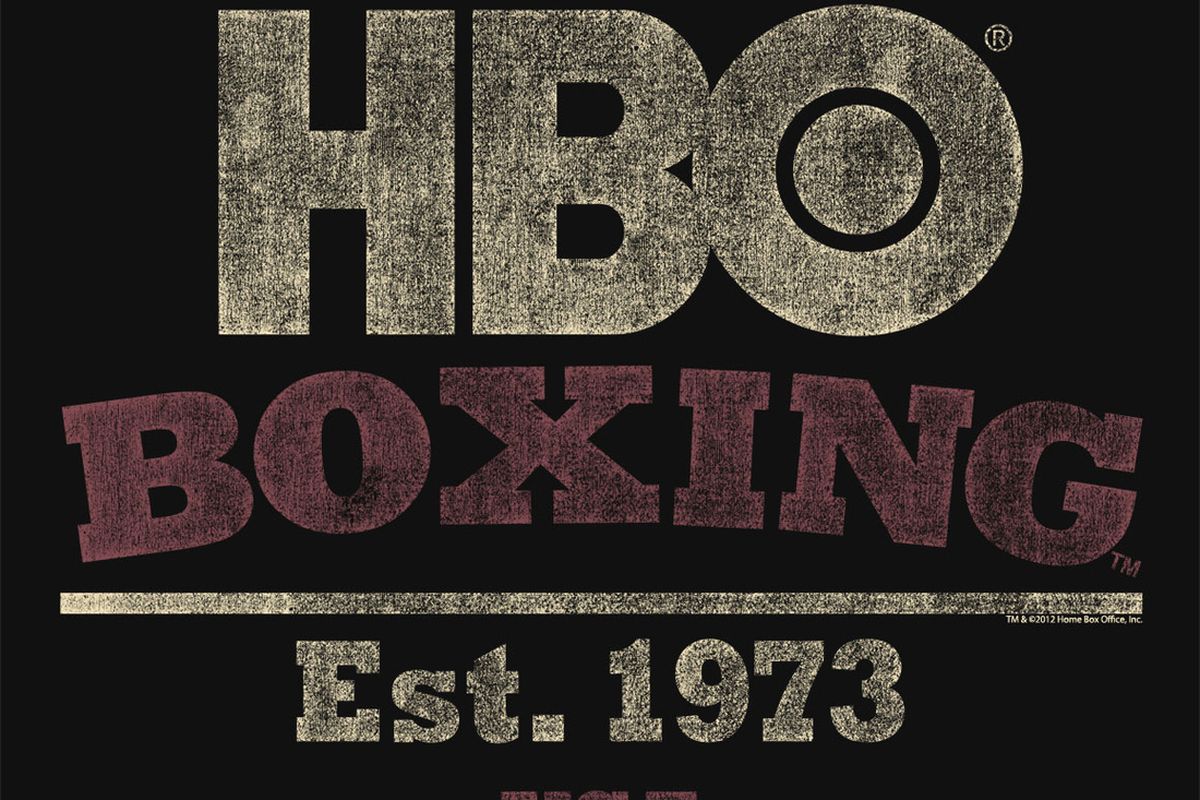
The departure of HBO from the boxing scene is particularly sad for CompuBox, for the “Network of Champions” was the first to take the leap of faith into the world of boxing statistics. Derided by Merchant as a “computer toy” at first, CompuBox achieved instant impact, thanks to the controversy stirred by its debut fight: Livingstone Bramble’s razor-thin decision over Ray Mancini in their February 16, 1985 rematch. From that point on, CompuBox was a mainstay of every telecast and I had the pleasure of working several of them since joining the company full-time in 2007. A personal highlight for me was the journey to Buenos Aires to chronicle Sergio Martinez’s homecoming middleweight title defense against Martin Murray in April 2013. The tens of thousands of rain-soaked fans in the soccer stadium produced an unforgettable atmosphere. The fight, while exciting, produced a debatable decision that would prove to be the final victory of Martinez’s career – at least for now, if recent reports are to be believed. But most of all, it was, to borrow a famous movie title, a most excellent adventure.
One of the reasons cited for HBO’s withdrawal was that boxing, among its target audience, no longer provided a compelling stand-alone reason to subscribe. For me, it was the only reason to subscribe.
It is also the only reason I subscribe to Showtime and, happily for all, that network is fully committed to boxing. As HBO waned, Showtime surged and, as a result, it has been the premium cable leader for several years. Like I said last week, boxing is in its best place in a generation and it looks as if the momentum will continue for years to come. The fact that HBO, by choice, will not be part of that resurgence is still disheartening.
*
I met Andy in the lobby at 11:45 a.m. and, because he is much more comfortable driving in urban settings, we agreed he should be the driver. We arrived at the Pechanga Resort Casino, found a parking spot within the assigned block reserved for Showtime crew and set up shop at ringside. We got the necessary green lights in relatively short order and during the next several hours, I chatted with ringsiders such as ring announcer Thomas Trieber, Christy Martin and wife Lisa Holywyne (who fought each other on the Lennox Lewis-Hasim Rahman II undercard. Martin won a 10-round decision) and Hall-of-Famer Joe Cortez, who now is a part of Team Haney. Unbeknownst to me, my brief chat with Cortez was being filmed by documentarians, who, upon learning I worked with CompuBox, asked to interview me. Me being me, the interview lasted quite a while, as I gave them statistical chapter and verse on Haney and I ended up missing the crew meal. No problem: I went to the back, acquired some tide-over food and drink from the production area and placed it inside my laptop bag.
The bout sheet listed a six-fight undercard but it wasn’t until 6:08 p.m. – 52 minutes before airtime – before the first set of fighters was summoned to the ring. Due to the shrinking time window, the scheduled six-rounder between welterweights Anthony Franco of Temecula and Denver’s David Payne was cut to four rounds. To me, Payne’s mobility, defensive prowess and timely counters appeared to win him the first two rounds, while, in rounds three and four, Franco’s aggression and heavier punches broke through more often. The judges and I agreed, as the bout was declared a three-way draw, causing the fighters’ records to proceed sideward to 2-1-1 with one stoppage win.
When it was announced that the second bout, a six-rounder between junior welterweights Ricardo Valdovinos, of San Diego, and Kevin Shacks, of Lansing, Michigan, was not shortened, I calculated that, if it went the distance, it would end just moments before airtime. Shacks, however, vaporized all timing concerns with impressive dispatch, as a thunderous right to the jaw suddenly caused Valdovinos’ legs to fold underneath him. Valdovinos, who entered the fight with a 7-0 (5) record, tried his best to regain his feet but his dizzied state prevented him from doing so. At 2:59 of round one, Shacks completed the stunning upset and advanced his record to 3-2-3 (3).
The other undercard bouts wouldn’t be contested until the national telecast was completed and, if conventional wisdom around ringside was correct, those fighters would be made to wait for several hours.
*
Lee Groves is a boxing writer and historian based in Friendly, West Virginia. He is a full member of the BWAA, from which he has won 16 writing awards, including two first-place awards, since 2011. He has been an elector for the International Boxing Hall of Fame since 2001 and is also a writer, researcher and punch-counter for CompuBox, Inc. He is the author of “Tales from the Vault: A Celebration of 100 Boxing Closet Classics” (available on Amazon) and the co-author of the newly released book “Muhammad Ali: By the Numbers” (also available on Amazon). To contact Groves about a personalized autographed copy, use the email [email protected] or send him a message via Facebook.
*
Struggling to locate a copy of The Ring Magazine? Try here or
Subscribe
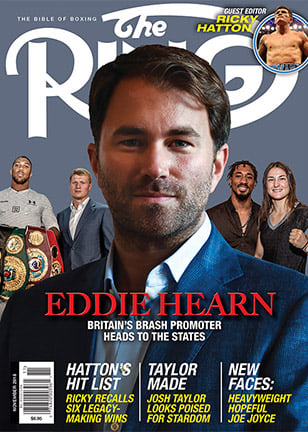
You can order the current issue, which is on newsstands, or back issues from our subscribe page.















